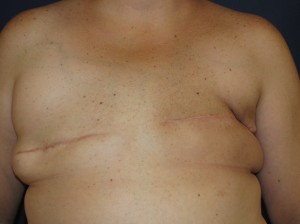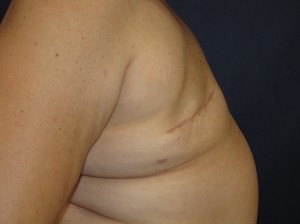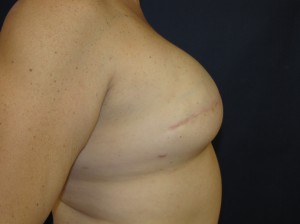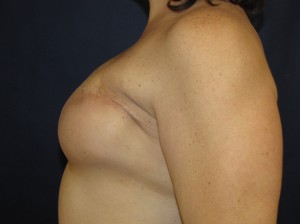In breast reconstruction, the ultimate goal is to recreate a breast that is as close as possible to the remaining breast. Perfect symmetry is naturally impossible. Even in situations where the reconstructed breast may be somewhat “similar” to the remaining breast in appearance in the immediate postoperative period, the two sides will invariably change or age differently over time, thereby increasing the differences.
Women who have undergone bilateral mastectomies inherently have better odds of obtaining symmetry in their breast reconstruction. Why? The reason is that they are often starting with similar deformities on each side, thereby allowing for the same reconstructive technique to be utilized for both breasts. This is true whether reconstruction is performed with the simple insertion of implants, usage of tissue expanders or with flaps such as a TRAM flap.
One notable caveat to this is if one side had been irradiated as an adjunct treatment of the breast cancer. As I noted in an earlier post (Problems With Tissue Expansion Breast Reconstruction In Previously Irradiated Tissue), the ionizing effects of the radiation treatments damages the skin resulting in scarring, thickening, increased rigidity and less suppleness of the tissues which often also show visual signs of the damage. This translates into tissue that is more resistant to the stretching that is necessary with tissue expansion breast reconstruction as well as breasts that often feel quite rigid or hard.
The following case illustrates this exact scenario. The patient underwent a bilateral mastectomy with radiation subsequently performed on the left side. In the photos, you may be able to appreciate the slightly darker color and firmness of the skin.
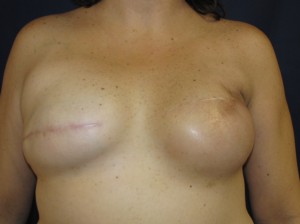
b.) Bilateral mastectomies with left breast irradiation. Post-op insertion and inflation of tissue expanders
She elected to undergo bilateral breast reconstruction using tissue expanders. Despite using identical tissue expanders, there is a significant difference in appearance between the two sides. Ironically, though the irradiated left side is inflated with more saline than the right, it actually appears less voluminous. That is an effect of the radiation damage.
If you would like to obtain additional information on breast reconstruction, breast implants or any other plastic surgery procedure that I perform or to schedule a consultation, you can contact my office at 480-451-3000.
Steven H. Turkeltaub, M.D. P.C.
Scottsdale and Phoenix, Arizona

